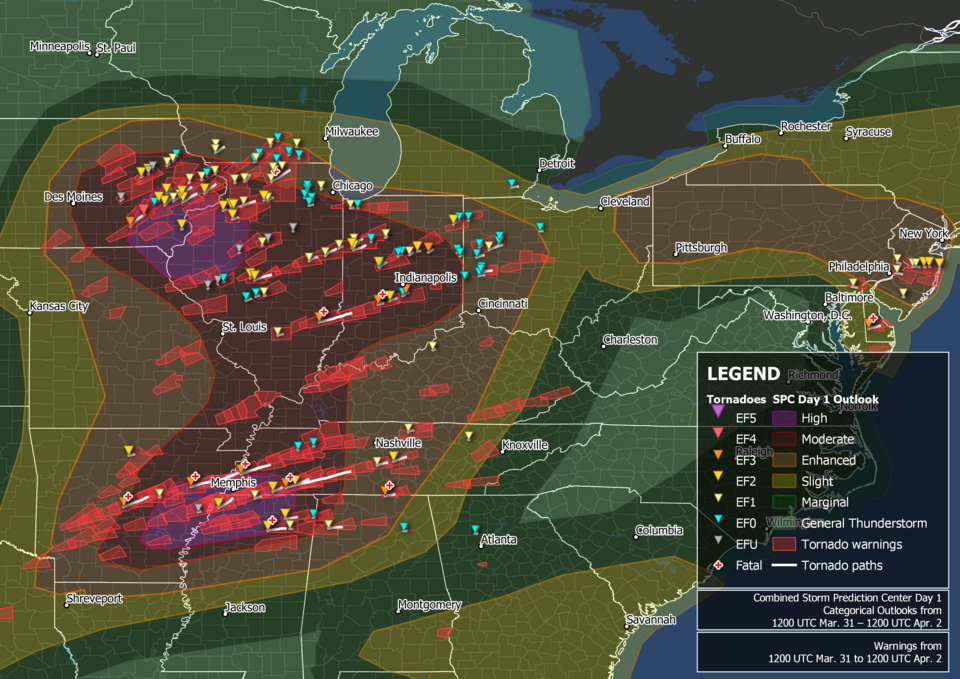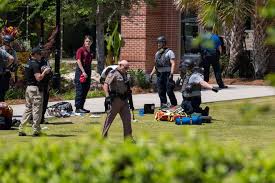During March and early April, a wave of strong storms and tornadoes swept across the midwest U.S, spanning from the great lakes to northern parts of Texas. These storms caused massive amounts of damage across the U.S, grabbing the attention of various weather experts and emergency crews.
Forecasters were particularly concerned about tornadoes, warning millions of people in the central and southern states with threats of over 70 mph, large hail, and severe thunderstorms.
The signs of the severe weather began on March 30, when the National Weather Service issued warnings for the following states, Illinois, Indiana, Michigan, Missouri, and Kentucky about high wind speeds and thunderstorms.
Major problems were already occurring in Indiana, including a mobile home flipping over in Valparaiso, which sadly resulted in 1 fatality. Showing just how dangerous high winds and the weather in general can be, damaging homes and vehicles.
As the storm system continued to move south. It passed through multiple states in the midwest, doing the most damage in Missouri, Illinois, and Arkansas, with reports of large hail along with strong wind. Strong storms began forming supercells, which have the potential for long-lasting tornadoes.
As we got into early April, the severe weather escalated even further. The storms are now reaching the northern parts of Texas and other southern states. This led to the storm prediction center issuing rare high-risk warnings for EF2 category tornadoes or even higher.
On April 2, several small towns in Oklahoma and even Nevada saw and faced many violent tornadoes destroying homes and businesses that happened to be in the area. One notable EF2 hit Pilot Grove, Missouri, leaving a manufactured home flattened and tossing around vehicles with its intense speeds.
The owner of the manufactured home, Jonathan Gerke had a few words to express his feelings on losing his house and belongings, “It’s hard to see it because there are some things that you find, and, you know, there are some things that you are never going to find that will just drive you crazy.”
Towns in the northern parts of Texas and Arkansas still had to deal with chunks of hail causing an abundance of property damage along with damage to crops and infrastructure.
Many meteorologists and other weather experts believe that these strong winds could be from the warmer air gusts that have been coming from the south, meeting and colliding with the colder air coming from the north, specifically around the Great Lakes.
Looking at this outbreak on a wider scale, we have yet to see the full extent of the tornado season and just how bad these storms can get. With these storms only beginning a few days ago, many can and should expect even more severe weather toward southern parts of the U.S.






